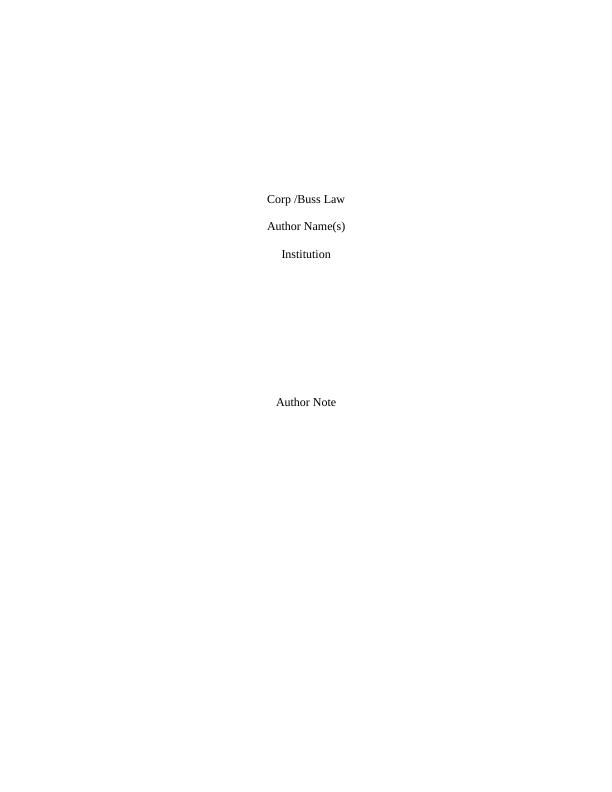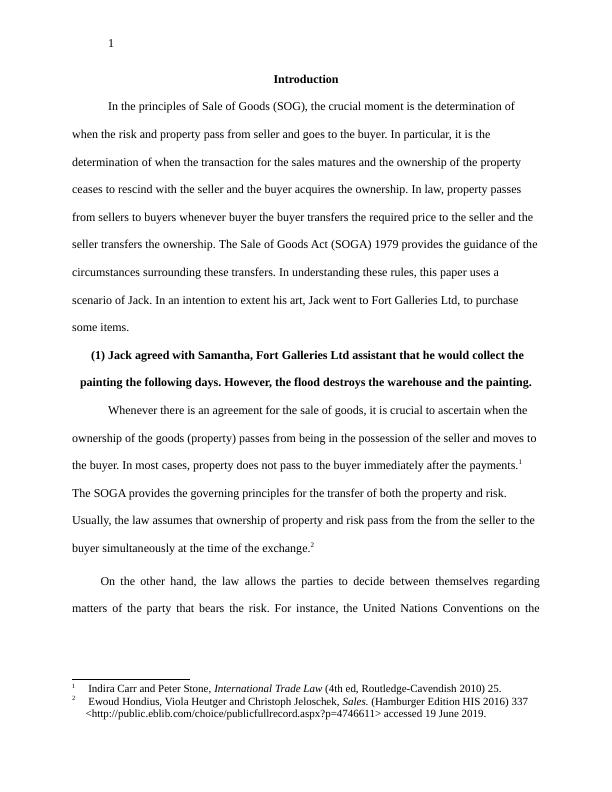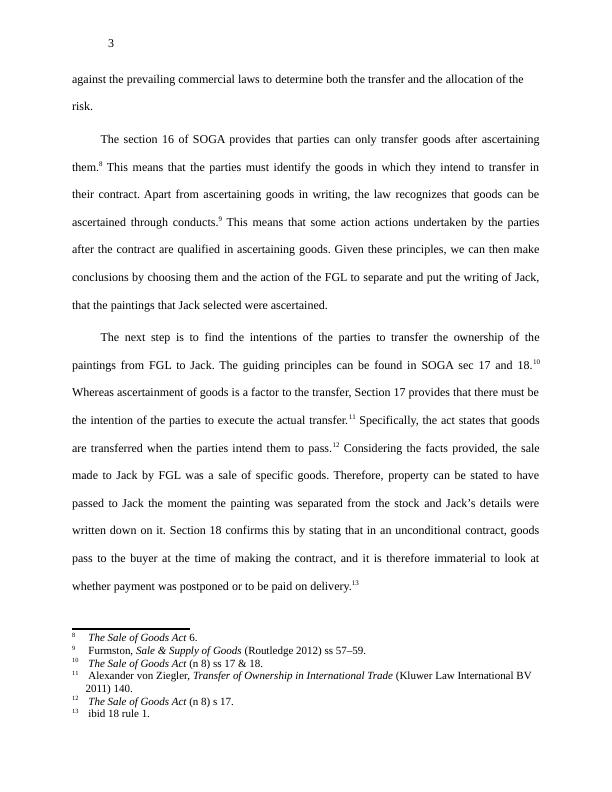Sale of Goods Act: Transfer of Property and Risk
Analyzing a case study involving property and risk in commercial law.
13 Pages3721 Words178 Views
Added on 2022-11-18
About This Document
This paper discusses the principles of Sale of Goods Act (SOGA) 1979 and the circumstances surrounding the transfer of property and risk. It uses a scenario of Jack and Fort Galleries Ltd to explain the application of the law. The paper also discusses the duties of performance to the contract to both the buyer and the seller and sets out the remedies to be provided if any other parties fails to honor its obligations. Finally, the paper discusses the circumstances where the buyer gets goods from the seller, obtains the possession, and the consent to resell.
Sale of Goods Act: Transfer of Property and Risk
Analyzing a case study involving property and risk in commercial law.
Added on 2022-11-18
ShareRelated Documents
End of preview
Want to access all the pages? Upload your documents or become a member.
Commercial Law: Property and Risk in Transactions
|14
|4291
|499
COMMERCIAL LAW Commercial Law Name of Student Name of University Author note
|13
|3340
|371
Question 1 - Sale of Goods A. The Sale of Goods Act 1908
|13
|3270
|406
Commercial Law: Sale of Goods Act, Consumer Guarantees Act, Fair Trading Act, Employment Law, Health and Safety Act
|12
|2624
|87
The Sale of Goods Act enforced in the year
|12
|3164
|14
Commercial Law, Consumer Guarantees Act, Fair Trading Act, Employment Law, Health and Safety
|11
|2881
|180




